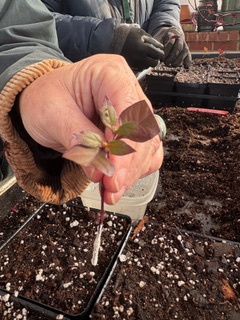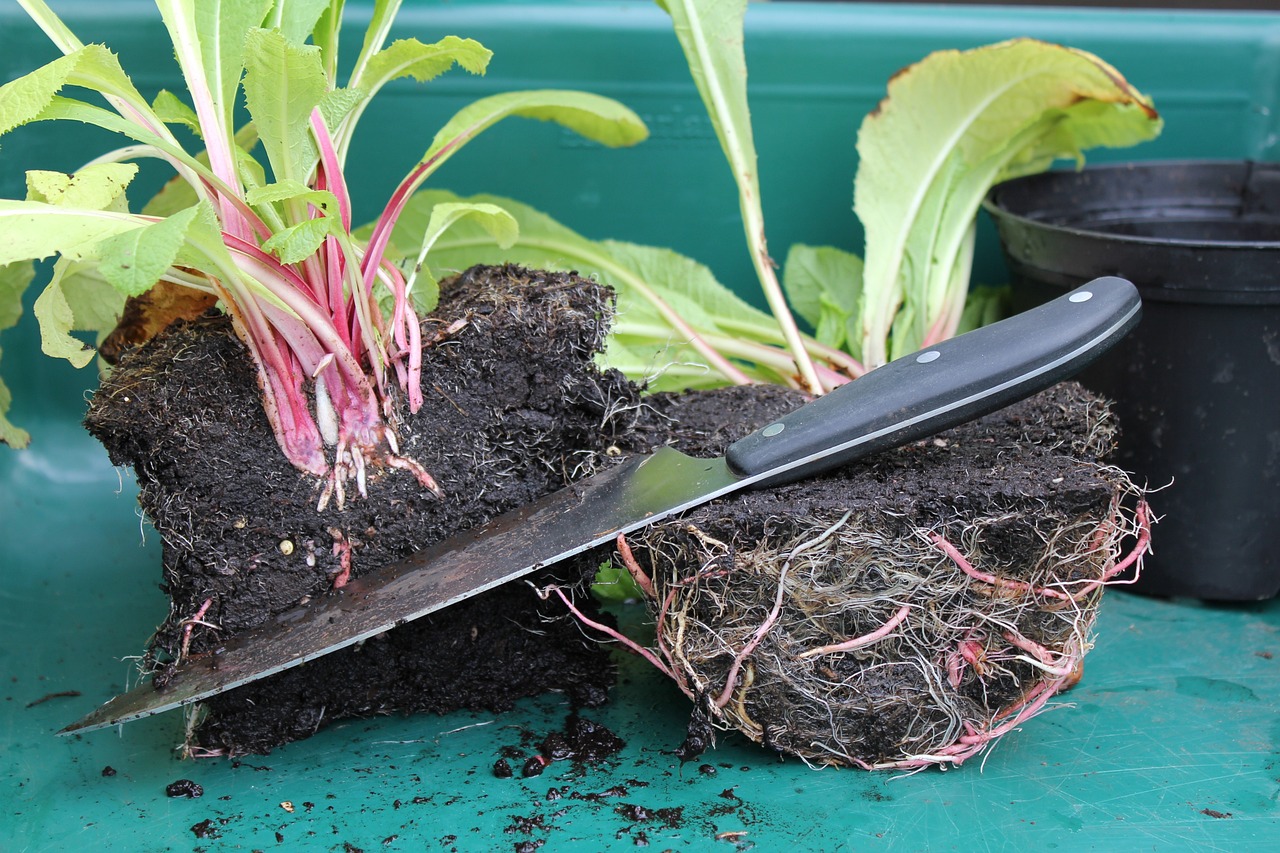by Julie Dangel, Fulton County Master Gardener Extension Volunteer
This article is part of Garden Buzz, a series from Appen Media and the North Fulton Master Gardeners, where rotating columnists explore horticulture topics like herbs, insects, and wildlife conservation. Find all Garden Buzz articles here.
Sharing Passalong Plants
Passalong plants are those we acquire when another gardener shares a seed, a cutting or a plant. Sharing or passing along plants and seeds is one of the oldest traditions in gardening. My garden is special to me because of the contributions from friends and fellow gardeners, which includes many plants that are often not available in our large retail nurseries. My inspiration and wisdom come from generous people who share their plants, e.g. daylilies, mountain mint, salvia, bee balm, and flowering almond.
Passalong plants are typically durable and easy to propagate, and they often come with experienced advice on how to continue their success. The added bonus is that when from friends and neighbors, they are free! The nature of passalong plants being easy to propagate makes it necessary for us to let our recipients know how the plants spread. Some plants will pass themselves along!
Timing
Passalong plants are easy to propagate by cuttings, division and seeds, and they can be propagated in fall or spring. A good rule of thumb is to divide your perennials in the season opposite of when they bloom. For example, I divide my spring bloomers (Stokes aster, phlox, and bee balm) in the fall.
Cuttings
A cutting is a term for using a stem, leaf or root to reproduce a plant. Both herbaceous and woody plants can be propagated from cuttings. I find stem cuttings the easiest to propagate. I choose a stem 3-5 inches long and remove all but 3-4 leaves. Plants can be rooted in water or soil. In soil, dipping the tip of the stem in rooting hormone can enhance propagation.


Division
Many perennials and bulbs eventually become overcrowded and thrive when divided. Mature plants can be separated by digging up a clump, pulling apart the smaller plants or by using a sharp spade or knife to cut the clump or tuber into smaller pieces. This is true of plants such as Stoke’s aster, bluestem grass, and irises. On some plants, you will find babies around the base that can be replanted. I find this to be true for herbs and succulents as well.
Seeds
You can also save seeds as your plant matures or just let them ripen on the plant. These seeds will re-germinate in the soil with favorable conditions. My favorites, including cleome, four o’clocks and milkweed, are easy to propagate by seeds. To grow your plants from seeds, plant them outside or fill a seed tray with moist soil. Plant your seeds with just enough soil to cover the seeds (you want good seed to soil contact) and keep the soil moist but not too wet. Provide light to ensure that the seeds get the energy needed to grow.
Please see the list of resources for details on propagating your plants. If you are looking to purchase passalong plants, the North Fulton Master Gardeners will offer their favorite plants during the 2025 Garden Faire Plant Sale. Plan to attend Saturday, April 12, from 9a.m. to 3p.m., at the Grove at Wills Park in Alpharetta, Georgia. Master Gardeners will be available to provide gardening advice for your plants.
Happy Gardening!
SAVE THE DATES for NFMG’s 2025 signature events: Garden Faire on April 12th and Garden Tour on June 7th. Learn more at www.nfmg.net
Learn More
- Passalong Plants, by Steve Bender and Felder Rushing
- Flowering Perennials for Georgia Gardens (UGA Extension)
- Flowering Bulbs for Georgia Gardens (UGA Extension)
- Starting Plants from Cuttings for the Home Gardener (UGA Extension)
- Step-by-Step Guide to Starting a Garden from Seeds (NC A&T)
- Passalong Plants (NC State Extension)
About the Author

This week’s “Garden Buzz” guest columnist is Julie Dangel, a lifelong researcher and educator and a North Fulton Master Gardener since 2015. She is a native Georgian and resident of Sandy Springs for 40 years. As a member of the North Fulton Master Gardeners, has served on the board and divides her time volunteering between the Teaching Museum/Greenhouse and Lost Corner Preserve.